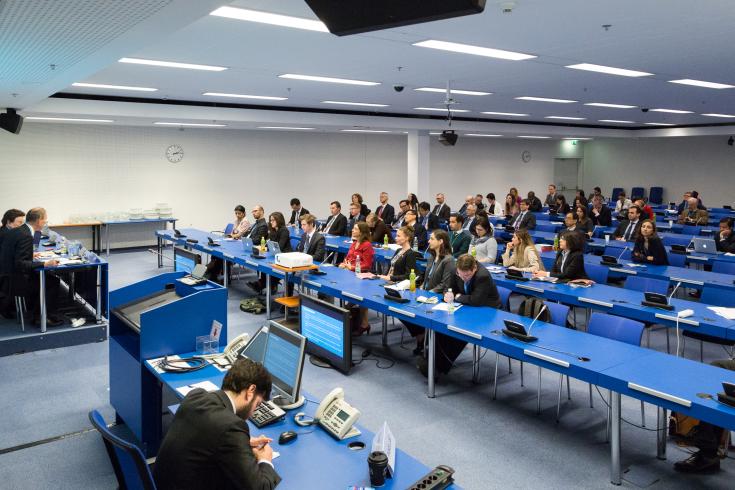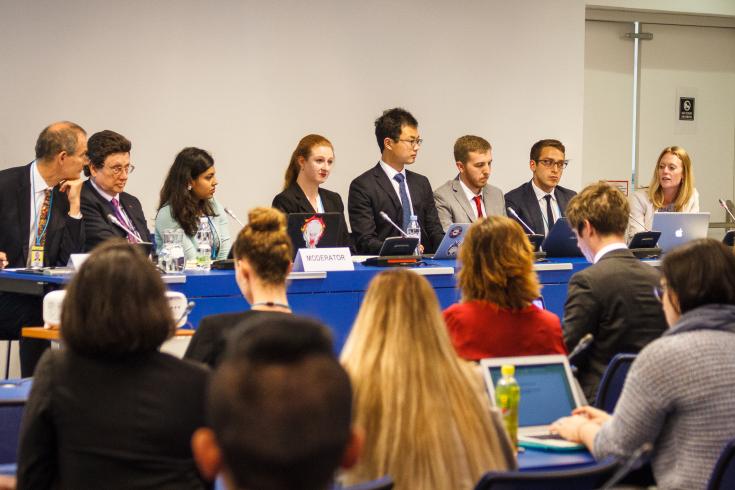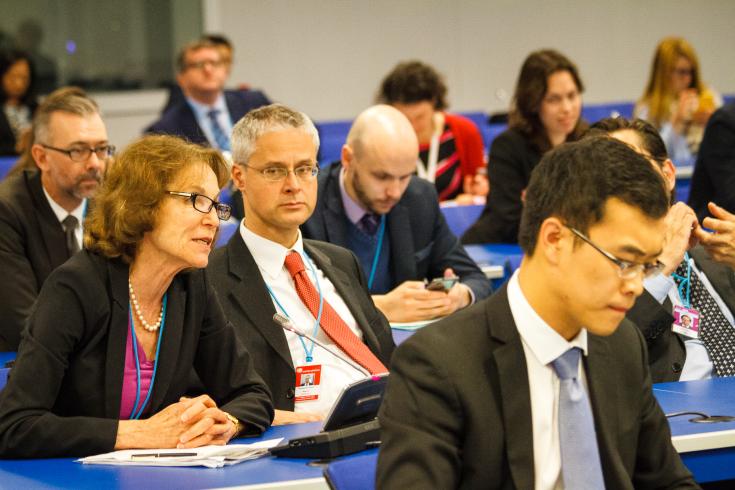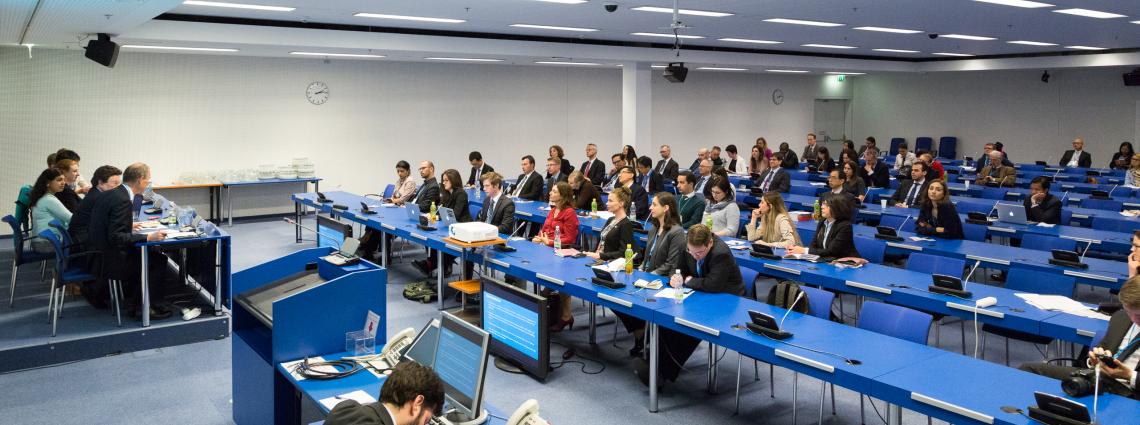Enhancing the role of the CTBT in the NPT review process: Side event of NPT PrepCom
Vienna, 5 May 2017
Dr. William Potter, founding director of the Center for Nonproliferation Studies, moderated the event, and Leigh Turner, UK Ambassador to Austria and Permanent Representative to the United Nations and Other International Organizations in Vienna, delivered closing remarks.

On 4 May 2017, CTBTO hosted a side event in connection to the 2017 Preparatory Committee for the 2020 Nuclear Non-Proliferation Treaty (NPT) Review Conference titled “Enhancing the role of the CTBT in the NPT review process”.

“The CTBT should occupy a place of prominence during the 2020 NPT review cycle” the six Youth Group Members argued on the basis of their research findings.

Following the presentation, the audience seized the opportunity to ask questions and join the discussion on how to elevate the profile of the CTBT in the context of the NPT.
In his closing remarks, Ambassador Turner expressed his wish to accelerate the entry in force for CTBT as well as his commitment to get the word out on why CTBT matters. He also acknowledged the verification capabilities of IMS and highlighted the role of his country as a major contributor to the CTBT both financially and as host of13 IMS stations.
The full text of the paper as well as its summary can be found here (PDF) and here (PDF) respectively. The study is the work of the CTBTO Youth Group members listed as authors. The views expressed herein are those of the authors and should not necessarily be seen as representing the Organization.
Disclaimer: The study is the work of the CTBTO Youth Group members listed as authors. The views expressed herein are those of the authors and should not necessarily be seen as representing the Organization.
5 May 2017
